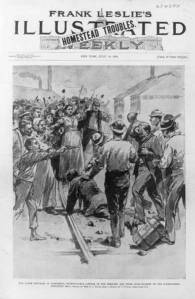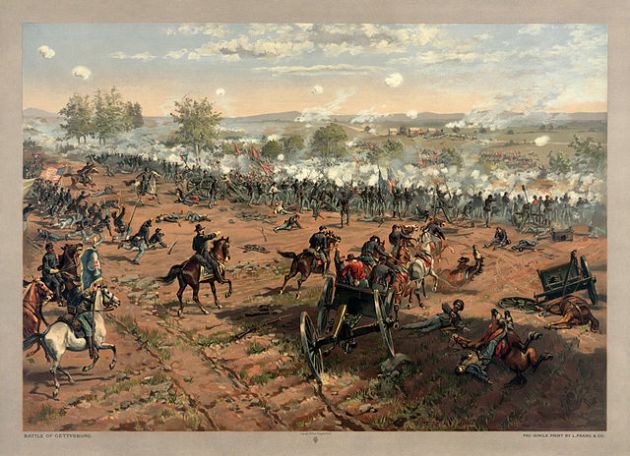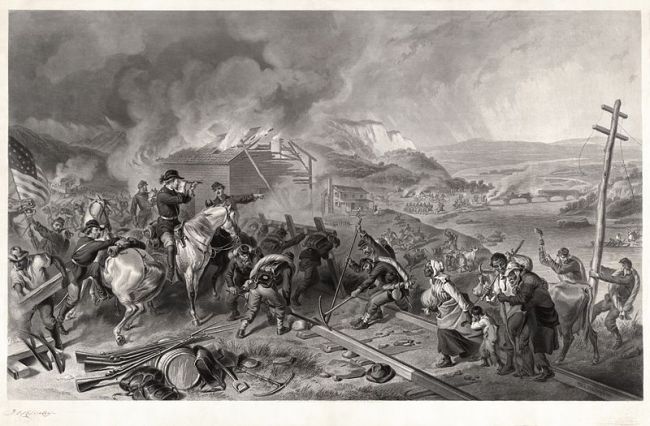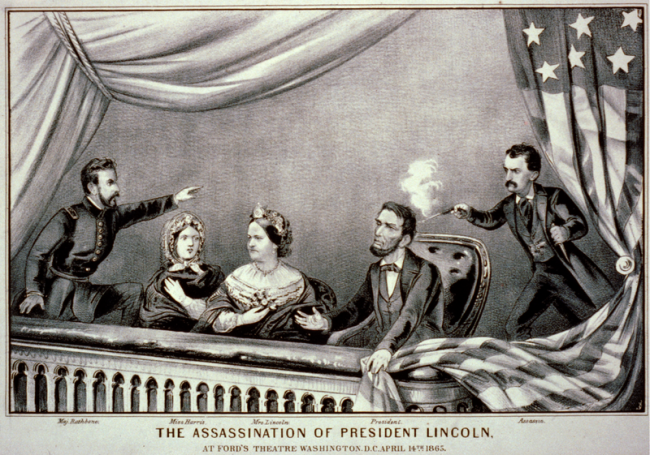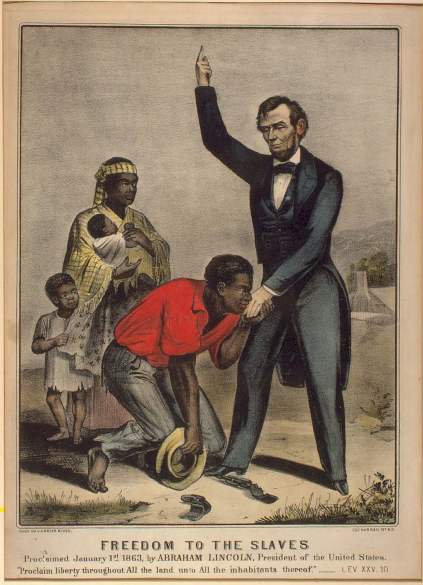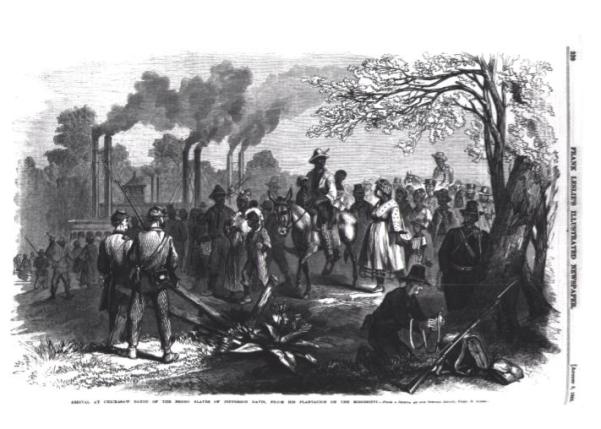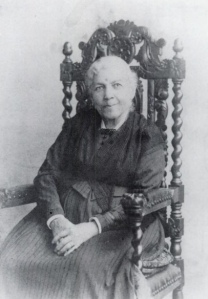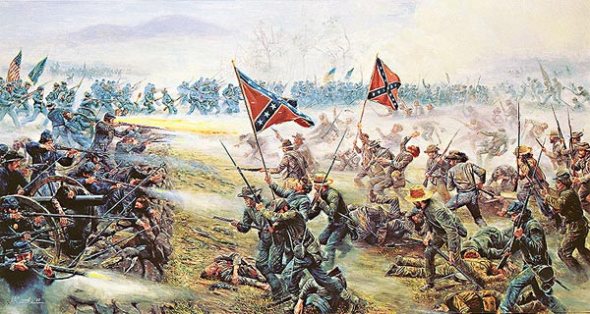After the American Civil War, the era of Reconstruction died before it could have truly begun. The 19th century idea of American Reconstruction was a radical time of racially social rebuilding that sought to create more civil rights for the Freedmen (freed African American slaves) which unfortunately became only a false hope. In the North, the presidential administration lead by Ulysses S. Grant was unable to support Freedmen due to nationally political setbacks. In addition, Northern racism influenced the lack of support for Freedmen, cutting down Reconstruction. In the South, Freedmen were oppressed from the racial abuse and violence of white supremacy groups, beating down the hopes for Reconstruction. Supporters of Freedmen such as the Carpet Baggers (Northern whites), Scalawags (Southern whites), and Radical Republicans (Freedmen concentrated Northern politicians) made attempts to support the Freedmen civil rights, but they soon digressed after attacks from the white supremacist group, the Ku Klux Klan. Other white supremacists violently threatened and swayed elections to prevent Radical Republicans to be elected into office. The North was unable to support Freedmen, thus the actions of Southern white supremacists caused the death of Reconstruction.
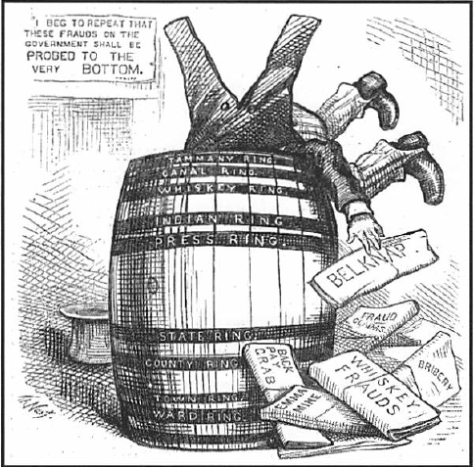
The South drove the final nail in the coffin for Reconstruction, but the North did little to assist Reconstruction due to two main reasons: President Ulysses S. Grant’s political difficulties and the unfavorable opinion towards Freedmen. From 1869 to 1877, Grant’s Northern based administration had to concentrate on national finance problems rather than the racial problems in the South. Political difficulties such as bribery and frauds distracted Grant from sending federal assistance for Freedmen in the South during his administration, halting the North’s attention from Reconstruction. Major financial downfalls like the Panic of 1873 and other government failures led many of the public to lose faith in the Northern government’s ability to lead, heavily putting pressure on Grant. The picture above captioned “[Grant] ‘In For It’ I hope I shall get to the bottom soon provided the North’s opinion toward Grant’s struggle to solve the country’s problems (Document C; Harper’s Weekly 1876). Grant’s attempts to solve the country’s financial problems forced him lose concentration on a solution for the problems in the South, severely suppressing Reconstruction in the process.

The Northern public opinion did not stop at Grant’s political difficulties. Despite the North’s support for freed slaves throughout the Civil War, a notable percentage of the North was racist towards Freedmen. This racism caused a great rift between different segments of the Northern public who supported Reconstruction. The Northern newspaper The Boston Evening Transcript argued in 1873 that Freedmen were incompetent and unfit for the political duties in state legislatures. They stated, “The rising generation of… blacks needed a period of probation and instruction; a period… long enough for the black to have forgotten something of his condition as a slave” (Document D). This Northern newspaper claimed that Freedmen were incompetent to hold legal positions until they could separate themselves from the ideology of slavery. The picture above further demonstrates the North’s racism; these black politicians are stereotypically depicted and are shown to be arguing among themselves, much to annoyance of the other white politicians (Document D; Harper’s Weekly 1874). The North’s racism was a definite breaking point for Freedmen civil rights; the lack of Northern support thus dealt a heavy blow to the faltering success of Reconstruction.
Document D: Heather C. Richardson, The Death of Reconstruction: Race, Labor and Politics in the Post-Civil War North, 1865-1901. (Cambridge: Harvard University Press, 2001).
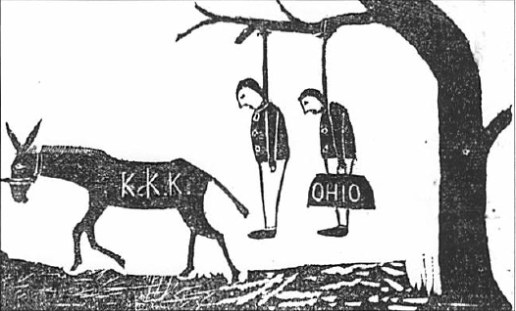
The political distractions and public racism of the North prevented significant federal assistance from supporting the faltering cause of Reconstruction, but the actions of racist Southerners killed Reconstruction. The Ku Klux Klan was known to target all those supporting Freedmen, ranging from the white civilian supporters like Carpet Baggers and Scalawags to important politicians like the Radical Republicans. In 1870, white Northern soldier Albion Tourgee gave an account of the Klan’s attacks on politicians in his letter to North Carolina Republican senator Joseph C. Abbott. “It is my mournful duty to inform you that our friend John W. Stephens from Caswell, is dead. He was foully murdered by the Ku-Klux in the Grand Jury room of the Court House” (Document A). The Klan attacked senators even when they were in court, showing the extreme measures white supremacists were willing to take to weaken the support for Freedmen, killing Reconstruction itself. The picture above further displays the Ku Klux Klan’s chilling effect on Freedmen supporters by displaying a Ku Klux Klan branded horse that caused for the hangings of two Carpet Baggers (Document A; Independent Monitor September 1, 1868). The Ku Klux Klan’s violent attacks on Freedmen supporters significantly added to the demise of Reconstruction.
Document A: Albion Tourgee to Joseph C. Abbott, Letter on Ku Klux Klan. (New York: New York Tribune, May 1870).
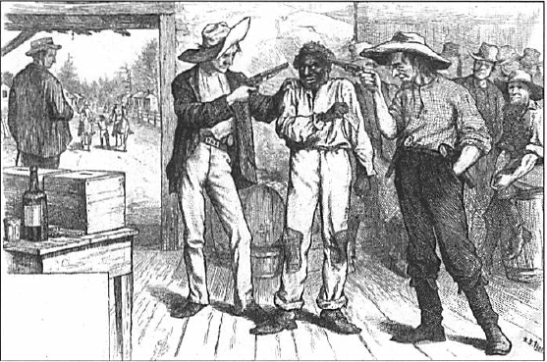
Besides the Ku Klux Klan, other white supremacists used violent tactics to decrease Freedmen civil rights and its supporters to kill Reconstruction. White Southerners swayed and rigged the political elections to favor the Democratic Party, seeking to remove the numerical advantage of Freedmen who wished to vote for the Republican Party. In the Georgia State Legislature in 1876, former slave Abram Colby made a testimony about the violent force Southern civilians would impose to ensure the victory of the Democratic Party. In his testimony Colby stated, “[Klansmen] broke my door open, took me out of my bed, took me to the woods and whipped me three hours or more and left me for dead. They said to me, ‘Do you think you will ever vote another damned Radical [Republican] ticket?’” (Document B). Colby was actually offered money by the white supremacists to not vote for the Republican Party in an earlier election, but when Colby refused, wanting to express his own civil rights, he was beaten and whipped until he swore to vote for the Democratic Party. In the picture above, two white Southerners are depicted holding guns to the head of a black voter with the picture caption “Of Course he wants to vote the Democratic ticket” (Document B; Harper’s Weekly 1876). By swaying the political elections in the South, white supremacy was allowed to reign without the intervention of Radical Republicans or any other opposing government powers. With the Southern government fully influenced by violent white supremacists, Reconstruction died with little hope left for the rights of Freedmen in the South.
Document B: Abram Colby, Testimony to joint House and Senate Committee. (1872).
In the end, the era of Reconstruction turned out to be a failure, the civil rights of Freedmen became all but dissolved, and the South was restored to white supremacy. The radical idea of Reconstruction was over, killed, as the North and South both contributed to its demise. The North to a lesser extent, Grant’s presidential administration was too distracted by nationally political difficulties that prevented the federal support for Freedmen in the South. Northern racism caused a rift between the public and its support for Freedmen, worsening Reconstruction survival even further. Southern white supremacist groups such as the Ku Klux Klan targeted the supporters of Freedmen: Carpet Baggers, Scalawags, and Radical Republicans alike, the Klan went as far as to killing Freedmen supporting politicians. The violent rigging of the elections further killed Reconstruction, as Southerners would attack Republican voters, ensuring that the Democratic Party would succeed, removing all federal support for Freedmen. The North was too politically distracted and racially conflicted to fully support Freedmen, thus Southern white supremacists were able to utilize violent tactics to decrease the rights of Freedmen and their supporters, causing the ultimate death of Reconstruction.
